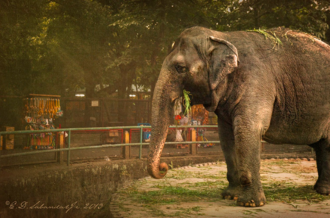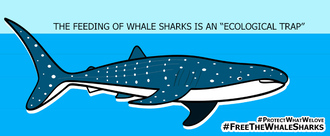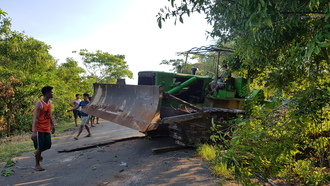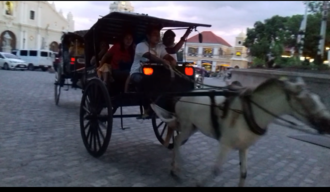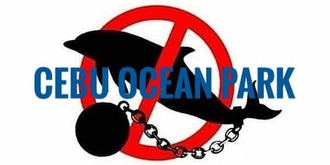-
LET MALI REST IN HER HOMELANDWildlife must live in the wild freely and their habitats protected. There may be temporary human intervention in saving wildlife due to anthropogenic distraction and distortion but conserving and rehabilitating spaces and habitats must also be done significantly. We call on the government to intensify education and information initiatives about Philippine wildlife and how we are able to work together in preserving them. Many Philippine endangered fauna are threatened due to mining, opening of roads, poaching and logging. While zoos may be educational and recreational, we see deeply in every animal's eye the longing to be in the wild. We recognize that we are in a very complex world where even in the wild, they are in danger, and within the walls of zoos they awkwardly satisfy the eyes of humans while depriving themselves of the vast possibilities and natural processes they ought to participate. Let us not add more suffering.40 of 100 SignaturesCreated by Living Laudato Si' Philippines

-
STOP NATIONAL ROAD CONSTRUCTION AT MT. GUITING-GUITING NATURAL PARKThe implementation of this project is a clear violation of R.A 11038 otherwise known as Expanded National Integrated Protected Areas System Act of 2018" and Proclamation No. 746 Series of 1996 which declares Mt. Guiting Guiting as a protected area. Since there is no feasibility study, known environmental impact assessment/study nor cost-benefit analysis, the potential implementation of the project is violative of the General Provisions of the 2020 GAA, specifically Section 26 (c) which says: “The planning and construction of all infrastructure projects to be implemented within the National Integrated Protected Areas System (NIPAS) are done in a way that eliminates and minimizes the risk of biodiversity loss while the specifications thereon are in accordance with those determined by DPWH, in coordination with DENR. Major infrastructure projects may only be taken in said areas if intended to enhance biodiversity.” This is a patent violation of our constitutional right to a balanced and healthful ecology in accord with the rhythm and harmony of nature. We were able to stop this project in 2018, we will do this again this year, and beyond.8,011 of 9,000 SignaturesCreated by Bayay Sibuyanon Inc. Romblon, Philippines

-
Whale shark feeding is an ecological trap! Free the Whale Sharks in Bohol![There's a new tourism attraction in Lila, Bohol that's harmful to the whale sharks.] We, a coalition composed of Bol-anon environmental advocates, multi-sectoral non-government and civil society organizations, faith-based groups and concerned citizens, would like to express our deep concern and strong opposition to the sanctioning of the opening and operation of the Taug whale shark tourism. Apart from its many apparent legal shortcomings, this venture at its current form is exploitative and unethical. It is incongruent with Bohol’s environmental policy of ensuring the sustainable utilization, management, protection, and conservation of its rich ridge-to-reef natural biodiversity – and as fully espoused by the current provincial administration’s intersectional key programs of: caring for the weak, Bohol cultural renaissance, tourism expansion, while ensuring adherence to environmental conservation and sustainability principles. THE ISSUE A new tourism attraction, the “Taug Whale Shark Watching and Snorkeling” in Barangay Taug in the municipality of Lila, Bohol, which has accordingly begun soft operations in late November or early December, is set to be launched in the third week of December 2019. As recounted by early guests, the operation collects an individual fee of P500 for locals and P1,000 for non-local tourists, and features watching, close interaction via snorkeling, and the feeding of the whale sharks (locally known as balilan). Actual photos and videos of these have been shared online by early tourists, a tour operator and individuals promoting the site. This offering is reportedly an initiative of a private investor with the support of the barangay, and possibly the partnership of the municipal government. It has been gathered that a Memorandum of Agreement is set to be signed by the Mayor, who has already been authorized by the Sangguniang Bayan (Municipal Council) with an approved resolution to enter into said contract with the project proponent. Pending formal inking of the agreement with the municipality, it would appear that its operation is still without proper local permits, not to mention, consideration of relevant marina regulations, tourism conventions, environmental and animal welfare laws affecting protected and endangered marine wildlife. Whale sharks (Rhincodon typus) are protected marine wildlife governed by local and international protection laws. They are listed in both the Convention on International Trade in Endangered Species of Wild Flora and Fauna under Appendix II (CITES) and the Convention of Migratory Species (CMS) The Philippines, as a champion in whale shark conservation, has committed to ensuring responsible tourism practices that will benefit and not harm the species. Feeding of wildlife is strictly prohibited in well-managed protected areas. The practice of feeding whale sharks and its consequences should not be encouraged and replicated. In a country where rules and regulations are difficult to implement, we do not want Bohol to be another example of what not to do and what not to be. Section 11 of Republic Act 8550, otherwise known as the 1998 Philippine Fisheries Code underlined among others, the protection of rare, threatened and endangered species in Section 11. Section 56 of the same provision further spelled out the law for non-obstruction to defined migration paths of migratory species. While Section 105 provided for the penalties in violation thereof. As of 2016, whale sharks are an endangered species according to the IUCN (International Union for Conservation of Nature). Republic Act 9147 furthermore provided for the conservation and protection of wildlife resources and their habitats. It sealed the responsibility of the local government unit and dedicated national agencies to implement and monitor related policies thereof. Whale sharks swim and move widely across the Philippine waters year-round, following seasonal food pulse, moving further across between the waters in the region, as documented in Taiwan, Malaysia, and Indonesia, and allowing for further nutrient exchange. Restricting their movements by creating an “ecological trap” through artificial provisioning or the act of feeding and luring alters their ecological roles and ecological needs. Monitoring of whale sharks in Donsol, Sorsogon and Sulu Sea through satellite tagging also shows that whale sharks spend more time in deep waters, with one of the deepest dives at over 1,400m recorded in the Bohol Sea. If the whale sharks do not move to their deep habitats or the next feeding area, which will provide the necessary nutrition to grow and develop and/or could possibly be mating and pupping grounds, they may be unable to perform their ecological roles in these ecosystems. As an endangered species, whale sharks require all the opportunities for reproduction. Conditioning whale sharks to approach boats can also make them more susceptible to injuries and poaching. The whale sharks’ positive association with boats may cause negative impacts when they swim to other areas where there are no guidelines and trained personnel for the conduct and monitoring of human interactions, as has been reported in other countries. Globally, businesses such as AirBnB, Instagram, and TripAdvisor have developed policies and regulations on animal welfare. Bohol, a leading tourism destination in the Philippines, should be at the forefront of sustainability. The feeding of whale sharks will impact Bohol as a key tourism destination, as the global importance of ensuring animal welfare in tourism is taking the center stage. Bohol and, we, the Bol-anons, must remain true to and continually pursue our eco-cultural identity and ideals. The feeding of the whale sharks in Brgy. Taug, Lila, Bohol and the illegal operation of the whale shark interaction tourism must be immediately suspended. Let us let the whale sharks swim freely in Bohol and elsewhere.6,180 of 7,000 SignaturesCreated by Bohol Eco Alliance

-
STOP THE COCKPIT ARENA CONSTRUCTION IN SOLANGON SAN JUAN, SIQUIJOROur community deserves a healthy and peaceful environment. We do not want noise pollution, security and sanitation problems from the Cockpit Arena. Help us send this message to Mayor Wilfredo and hope for his positive response.153 of 200 SignaturesCreated by Ody Lalim
-
DEMAND A BAN ON HORSE CARRIAGE IN VIGANThe lives and welfare of carriage horses are compromised in the pursuit of profit in the city of Vigan. Coachmen are periodically failing to adhere to the Department of Tourism Rules & Regulations on Accreditation of Kalesa horses. The enslavement of these poor animals must end immediately.411 of 500 SignaturesCreated by Angeline Walton
-
Save Island Cove / Animal IslandFor local fisherman. Climate change110 of 200 SignaturesCreated by Jillian Uy
-
Stop the 1500-ha Cordova, Cebu Reclamation ProjectWe need to preserve and protect our coastal areas as our marine resources and our heritage because of the underlying history and cultural influence of this vast coastal area in Cordova. Cordova is known for its wide area of muddy shoreline which is great breeding habitats for eel or bakasi (Scuticaria tigrina) which became an iconic seafood (aphrodisiac) for Cebuanos. They thrive also because of the vast area of seagrass that encompass the whole coast of Cordova. Cordova also has a Mangroove Sanctuary that used to be an ecotourism but was also deeply affected during the last oilspill. We also have a nearby marine sanctuary and giant clams being cultured and protected. If the coastal area of Cordova will disappear, there will be no more nursery and breeding places for smaller fishes before they go to the open sea or to the rich marine sanctuary. Lastly, it is most likely that they will quarry the mountain to use in reclaiming that area. Mountains will be denuded. Terrestrial and aquatic resources are both destructed here and we can't tolerate no more with the threats of harsh weather and climate change.89 of 100 SignaturesCreated by Eunice Rosales
-
Stop Easter Wish BALLOON Release of 'Christ, King of the Universe' Parish!GOD made us, humans, to take care of all HE has created. With this kind of event, are we taking care of our only home? Genesis 2:15 NIV The Lord God took the man and put him in the Garden of Eden to work it and take care of it. During a mass last Palm Sunday, 'Christ, King of the Universe Parish' (https://web.facebook.com/CKUParish/ ) announced that they will conduct a balloon release with wishes this Easter Sunday. All of these balloons, once released, will end up as waste in landfills and other areas which will harm wildlife, marine and terrestrial ecosystems and even clog sewage systems, among others.179 of 200 SignaturesCreated by Megumi Kawaguchi
-
Stop Dolphin and Sea Lion shows in Cebu Ocean ParkWhy is it important? Their enslavement should not be our entertainment. Cebu is a beautiful island with rich marine biodiversity. It is always good to enjoy Cebu by visiting sustainable and eco-friendly sites and not going to places where they exploit marine species for entertainment. These animals, once they are in captivity, can affect their behaviours - both physically and physiologically that can put their well-being at risk. And this is what the proposed dolphin and sea lions shows in Cebu Ocean Park will do to our marine friends - they will be held captive and enslaved for entertainment and profit. These animals should not be made to perform or forced to provide rides or handling by visitors. We call on the government to ensure that there won't be any Threatened and protected species going into this facility. We should show compassion and love for these voiceless animals. They deserve the right to be in the wild. The Philippines is one of the best tourist destinations in the world because of its marine biodiversity and natural beauty. The last thing we need is another dolphin and sea lion show.5,005 of 6,000 SignaturesCreated by Elaana Kirsten Balbuena
-
STOP CEBU's La Vie in the Sky Skylanterns Release"I would like us all to make a serious commitment to respect and protect creation, to be attentive to every person, to counter the culture of waste and disposable, to promote a culture of solidarity and of encounter. Thank you." - Pope Francis. General Audience June 5th, 2013 "This same “use and throw away” logic generates so much waste, because of the disordered desire to consume more than what is really necessary." - Pope Francis (Laudato Si, 123) This activity is INTENTIONAL VIOLATION of Republic Act 9003 - mismanagement and improper segregation of waste. Likewise, of the fisheries code and wildlife act, among others. 1. What goes up must come down, and farmers in particular have become increasingly concerned that livestock might swallow a lantern's wire or bamboo frame, or, even worse, that fires might break out in hay barns. Elsewhere, coastguards say lanterns, which can travel for several kilometres and to an altitude of 1,000m before the candle burns out, are routinely mistaken for distress flares. A handful of east Asian countries, such as Vietnam, Malaysia and Thailand, have already introduced bans, particularly in the lead up to major festivals. (https://www.theguardian.com/environment/2010/feb/02/sky-lanterns-danger-farm-animals) 2. Countries like Argentina, Austria, Australia, Brazil, Chile, Colombia, Costa Rica, New Zealand, Spain, Germany, and parts of Canada and the USA have actually already banned the release of sky lanterns. (http://www.wheninmanila.com/why-we-should-not-release-balloons-skylanterns/). 3. However, the worst part of the fallout from the activity is the impact on local fauna. Reports of animals dying painfully, typically strangled by old lanterns' wires or suffocated by undecomposed paper, are frequent during this time of year. Some visitors are no doubt already aware of this, particularly following the high-profile death of an owl in the U.K. a few years ago. The bird was found suffocated and partly burnt inside the remains of a lantern... Humans are also at risk. The light emitted by lanterns sent en masse at night has been proven to be disruptive to aircraft pilots. As such, some countries like Malaysia have banned the use of sky lanterns in and around certain cities in order to prevent fatal accidents. (http://www.chinapost.com.tw/editorial/taiwan-issues/2017/02/10/491229/pingxis-sky.htm) 4. Though they are undoubtedly beautiful, even the biodegradable lanterns can be incredibly harmful to both the environment and wildlife. Sky lantern litter takes quite some time to decompose, and the wire frames have been known to strangle and maim wild animals and livestock. They also pose a significant fire hazard. Not only have they caused multiple wildfires, a sky lantern was also responsible for a massive fire at the Smethwick Recycling Plant in West Midlands, England. (http://earth911.com/living-well-being/events-entertainement/environmental-impact-traditions/) 5. With Save Philippine Seas, know more about the ills and harms of sky lantern releases here: https://www.facebook.com/pg/savephilippineseas/photos/?tab=album&album_id=13182383849323671,150 of 2,000 SignaturesCreated by Living Laudato Si' Philippines

-
STOP COVE MANILA'S BALLOON DROPIt is unsustainable, wasteful and ecologically apathetic. Cove Manila said that the balloon drop will be done indoors and will follow waste disposal guidelines but the activity in itself contradicts the basic principles of environmental sustainability. 1. All of these balloons, if not recycled, will end up as waste in landfills and other areas which will harm wildlife, marine and terrestrial ecosystems and even clog sewage systems, among others. 2. The Philippines is 3rd in the world dumping wastes into the oceans. Don't add more. 3. There are environment-friendly alternatives, read here: https://balloonsblow.org/environmentally-friendly-alternatives. Need more reference? Download Save Philippine Seas Defying Gravity Toolkit at http://www.savephilippineseas.org/toolkits Let's look reflect on the words of econetizen Grayson Gil Lidon Yañez: "Dear Cove Manila, we know this event sounds like a blast in time for the new year but we’ve never been this challenged with plastic pollution than ever before. 130,000 is a massive number of balloons and trash that could flow to the oceans in due time. We hope you reconsider your choice of material for your celebration and we would gladly help you think of more environmentally-friendly yet still fun ways to usher in the new year... We understand that it will be done indoors and that you comply with waste disposal rules. But wouldn’t it be wiser, more cost-efficient, and sustainable to prevent at source? And by this we mean completely refraining from using balloons instead. It’s 130,000 plastic/rubber balloons we are talking about here — at a single event. Chances are it will still be dumped in sites or eventually end up in the oceans. Hope you will still reconsider and help us take action in taking care of our environment. There are many ways to celebrate and have fun, but not at the expense of the environment. And again, we will gladly help you think of other ways..." Econetizen Edgar Alan Zeta-Yap adds: "Despite repeated calls by netizens this past week to find an eco-friendly alternative to their extremely wasteful event, Cove Manila of Okada Manila continues to defend their ”record-breaking” release of 130,000 balloons at their New Year’s Eve party, sponsored by Hennessy and Belvedere Vodka. Justifying that the world’s largest balloon drop will be held indoors and that proper waste disposal will be followed, they totally miss the point as the country — and the entire planet — suffers from plastic pollution on a monumental scale as it is. More than 80% of plastic waste in the country is mismanaged, and often ends up in the ocean. And the Philippines is already the world’s third largest contributor to plastic pollution in the ocean."72,226 of 130,000 SignaturesCreated by Rodne Galicha
-
Animal protection in the PhilippinesThe Palawan Animal Welfare Association was created by Jackie Baut, Belgian citizen. Here is the presentation of their website: "It's a special fondness for the Philippines and an endless love for animals that has led Jackie Baut to follow her passion to Palawan, a small island in the Philippines archipelago north of Borneo. , this former active member of the "Gaia" and "Animals in Peril" associations is dedicated to relieving the misery of abandoned and abused animals. Palawan is the most beautiful, intact and authentic place of this beautiful country but also the most difficult to carry out such projects. The first objective was the rehabilitation of wild animals illegally held but, very quickly, she realizes that stray dogs also need help. In cooperation with the city's veterinarians and Dr. Danilo Quintero, she built a mobile clinic to sterilize dogs and cats.138 of 200 SignaturesCreated by Digriz Digriz

